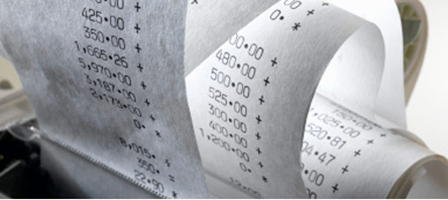Employee Retention Credit Extended Through June 2021
- Learn about the extension of the Employee Retention Credit.
- Find out why the credit was created and how the program works.
- Discover how employers may receive an advance payment.
- Find out how employers qualify for the credit.
- Learn which wages qualify for the credit.
- Discover the impacts of this program on other tax provisions.
- Learn how to claim the credit.
To help trades and businesses retain employees during the pandemic, the CARES Act created the Employee Retention Credit for 2020. And now, Fiducial has some good news! As part of the Consolidated Appropriations Act, 2021 (CCA), the credit has been extended through June 2021.
How the program works
The Employee Retention Credit is actually a government-sponsored program to keep workers employed. It provides qualifying employers with a refundable credit against certain employment taxes equal to 70% (up from 50% prior to 2021) of the qualified wages that an eligible employer pays to employees after March 12, 2020, and before July 1, 2021. (Before the extension, the credit ended on December 31, 2020.)
What happens if the employer's employment tax deposits do not cover the credit? The employer may get an advance payment from the IRS. They must file Form 7200, Advance of Employer Credits Due to COVID-19 to receive this payment. For each employee, up to $10,000 in wages (including certain health-plan costs) per quarter (versus $10,000 per year in 2020) may count toward the amount of the 70% credit.
Eligibility for the Employee Retention Credit
Employers, including tax-exempt organizations, are eligible for the 2021 Employee Retention Credit. However, they must operate a trade or business between January 1, 2021, and June 30, 2021, and experience either:
- the full or partial suspension of the operation of their trade or business during any calendar quarter because of governmental orders limiting commerce, travel, or group meetings due to COVID-19; or
- a significant decline in gross receipts.
A significant decline in gross receipts for 2021 occurs when an employer’s gross receipts for a calendar quarter are less than 80% of its gross receipts for the same calendar quarter in 2019 (in other words, when gross receipts for the 2021 quarter are reduced by more than 20% of the corresponding 2019 quarter’s gross receipts).
- If the business didn’t exist at the beginning of the same calendar quarter in calendar year 2019, substitute “2019” for “2020.”
- Employers, by election, can apply the gross-receipts test by using the immediately preceding calendar quarter. For example, instead of comparing the gross receipts of the first quarter of 2021 with those of the first quarter of 2019, an employer can elect to compare the gross receipts of the fourth quarter of 2020 to those from the fourth quarter of 2019.
The Employee Retention Credit applies to qualified wages (including certain group health-plan expenses) paid during this period or any calendar quarter with suspended operations. Eligible health-plan expenses consist of the amounts paid by the employer to provide and maintain group health-plan coverage. This applies to the extent that the amounts are nontaxable to the employees.

Qualified Wages
The definition of qualified wages depends on how many employees an eligible employer has. For the 2021 credit, if an employer averaged more than 500 full-time employees during 2019 (versus 100 for the 2020 credit), wages count as qualified wages, including eligible health-care costs (up to $10,000 per employee per quarter) paid during that quarter to employees who did not provide services because of layoffs or furloughs.
If an employer averaged 500 or fewer full-time employees during 2019 (versus 100 for the 2020 credit), qualified wages consist of wages, including eligible health-care costs (up to $10,000 per employee per quarter), paid to any employee during a quarter of suspended operations or for which the decline in gross receipts applies, regardless of whether its employees provided services.
The rules for claiming credits based on the payment of “qualified health plan” expenses for eligible employees are retroactive to March 23, 2020. As a result of these changes, additional credits may become due to an employer for prior calendar quarters based on the payment of qualified health-plan expenses. In that case, employers may claim those credits when filing IRS Form 941 for the fourth quarter of 2020.
Impacts of Other Credit and Relief Provisions
Other credit and relief provisions will impact an eligible employer's ability to claim the Employee Retention Credit as follows:
- If an employer receives a Small Business Interruption Loan under the Paycheck Protection Program, as authorized under the CARES Act, then the employer did not meet eligibility requirements for the Employee Retention Credit in 2020. However, the CCA changed this rule, retroactive to March 23, 2020. Borrowers of PPP loans may now claim the Employee Retention Credit. However, to the extent that an eligible employee’s wages are used to substantiate the forgiveness of a PPP loan, employers may not use those same wages to claim the Employee Retention Credit.
- Wages for this credit do not include wages for which the employer received a tax credit for paid sick and family leave under the FFCRA.
- Wages counted for this credit will not count toward the credit for paid family and medical leave.
- Employees will not count toward this credit if the employer is allowed a Work Opportunity Tax Credit.
Claiming the Employee Retention Credit
In order to claim the new version of the Employee Retention Credit, eligible employers must report their total qualified wages and the related health-insurance costs for each quarter on their quarterly employment tax returns. Most employers must fill out Form 941. The credit is taken against the employer's share of Social Security tax, but the excess is refundable under normal procedures.
Have questions about whether or how this credit might apply to your business? Call Fiducial at 1-866-FIDUCIAL or make an appointment at one of our office locations to discuss your situation.
Ready to book an appointment now? Click here. Know someone who might need our services? We love referrals!
For more small business COVID-19 resources, visit Fiducial’s Coronavirus Update Center to find information on SBA loans, tax updates, the Paycheck Protection Program, paid sick and family leave, and more.









